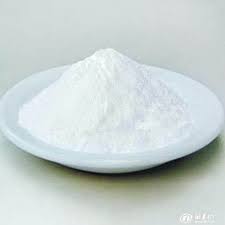
silica fume and fly ash in concrete factories
The Role of Silica Fume and Fly Ash in Concrete Factories
In the construction industry, the quest for enhancing concrete performance has led to the incorporation of various supplementary cementitious materials (SCMs). Two notable materials that have gained traction in recent years are silica fume and fly ash. These materials not only elevate the mechanical properties of concrete but also contribute to sustainable building practices.
Silica fume, a byproduct of silicon and ferrosilicon alloy production, consists of extremely fine particles that can significantly improve the strength and durability of concrete. When added to concrete mixtures, silica fume reacts with calcium hydroxide, a byproduct of cement hydration, to form additional calcium silicate hydrate (C-S-H), which is the primary compound responsible for concrete’s strength. This pozzolanic reaction not only enhances compressive strength but also reduces permeability, making concrete less susceptible to chemical attacks and environmental wear. Hence, utilizing silica fume is particularly beneficial in applications where high performance is essential, such as in bridges, high-rise buildings, and exposed structures.
silica fume and fly ash in concrete factories

On the other hand, fly ash, a byproduct from coal combustion in power plants, plays a vital role in improving the workability and long-term strength of concrete. Depending on its classification, fly ash can enhance the fluidity of concrete mixtures, reducing the need for water and thus assisting in achieving lower water-to-cement ratios. This property not only promotes better hydration of cement particles but also leads to a reduction in efflorescence and cracking. Moreover, the use of fly ash contributes to sustainability by recycling industrial waste, thereby reducing the carbon footprint associated with cement production.
The combination of silica fume and fly ash in concrete formulations can yield synergistic effects, unlocking even higher performance metrics. When correctly proportioned, this blend can result in superior mechanical properties, improved durability, and enhanced workability. Moreover, the dual use of these materials aligns with the growing emphasis on sustainable construction practices, as both silica fume and fly ash minimize the reliance on traditional cement.
In conclusion, integrating silica fume and fly ash into concrete production processes represents a significant advancement in material technology. By harnessing the unique benefits of these supplementary materials, concrete factories can deliver high-performance products that meet the demands of modern construction while promoting ecological responsibility. As the industry continues to innovate, the importance of these materials in achieving quality and sustainability cannot be overstated.
Share
-
Fly Ash Solutions Enhanced by GPT-4 Turbo | Sustainable InnovationNewsAug.01,2025
-
Natural Premium Bentonite Cat Litter - Superior ClumpingNewsJul.31,2025
-
Premium Resin Coated Sand - High Heat Resistance CastingNewsJul.31,2025
-
High Quality Silicon Carbide Grit for Abrasive ApplicationsNewsJul.30,2025
-
High-Quality Ceramsite for Plants & Gardening | Lightweight PebblesNewsJul.29,2025
-
Premium Burgundy Glass Marbles for Vases & Shooter GamesNewsJul.29,2025






